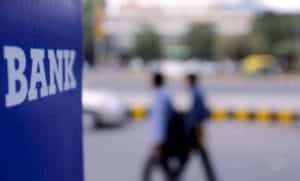NPA in India and its impact on Indian Economy | UPSC – IAS
Reasons for the Rise in NPA levels | UPSC – IAS
2004-05 to 2008-09 – In that period, commercial credit (or what is called ‘non-food credit’) doubled. It was a period in which the world economy as well as the Indian economy were booming. Indian firms borrowed furiously in order to avail of the growth opportunities they saw coming.
- Most of the investment went into infrastructure and related areas — telecom, power, roads, aviation, steel.
- Businessmen were overcome with exuberance and they believed, as many others did, that India had entered an era of 9% growth.
- From 2000-2008, the Indian economy was in a boom phase and banks, especially public sector banks, started lending extensively to companies.
- However, with the financial crisis in 2008-09, corporate profits decreased and the Government banned mining projects. The situation became serious with the substantial delay in environmental permits, affecting the infrastructure sector – power, iron, and steel – and resulting in volatility in prices of raw materials and a shortage of supply.
- Another reason is the relaxed lending norms adopted by banks, especially to the big corporate houses, foregoing analysis of their financials and their credit ratings.
Recent Developments and Ways to Tackle NPA | UPSC – IAS
- The Debt Recovery Tribunals (DRTs) – To decrease the time required for settling cases. They are governed by the provisions of the Recovery of Debt Due to Banks and Financial Institutions Act, 1993. However, their number is not sufficient therefore they also suffer from time lag and cases are pending for more than 2-3 years in many areas. The original aim of the Debts Recovery Tribunal was to receive claim applications from Banks and Financial Institutions against their defaulting borrowers
- Using unclaimed deposits – Similar to provisions for unclaimed dividends, the government may also create a provision and transfer unclaimed deposits to its account. These funds in return can be transferred to banks as capital.
- Monetization of assets held by Banks – In this case, banks with retail franchisees should create value by auctioning a bank assurance association rather than running it themselves as an insurance company. The current set-up blocks capital inflows and doesn’t generate much wealth for the owners.
- Make Cash Reserve Ratio (CRR) attractive – At present, the RBI asks Indian banks to maintain a certain limit on CRR on which the RBI doesn’t pay interest and hence, banks lose out a lot on interest earnings. If the CRR is made more financially rewarding for banks, it can reduce capital requirements.
- Refinancing from the Central Bank – The US Federal Reserve spent $700 billion to purchase stressed assets in 2008-09 under the “Troubled Asset Relief Program.” Indian banks can adopt a similar arrangement by involving the RBI directly or through the creation of a Special Purpose Vehicle (SPV).
- Structural change to involve private capital – The compensation structure and accountability of banks create a problem for the market. Banks should be governed by a board while aiming to reduce the government’s stake and making the financial institutions attractive to private investors.
- Credit Information Bureau – A good information system is required to prevent loan falling into bad hands and therefore prevention of NPAs. It helps banks by maintaining and sharing data of individual defaulters and willful defaulters.
- Lok Adalats – They are helpful in tackling and recovery of small loans however they are limited up to 5 lakh rupees loans only by the RBI guidelines issued in 2001. They are positive in the sense that they avoid more cases into the legal system.
- Compromise Settlement – It provides a simple mechanism for recovery of NPA for the advances below Rs. 10 Crores. It covers lawsuits with courts and DRTs (Debt Recovery Tribunals) however willful default and fraud cases are excluded.
- SARFAESI Act – The Securitization and Reconstruction of Financial Assets and Enforcement of Security Interest (SARFAESI) Act, 2002 – The Act permits Banks / Financial Institutions to recover their NPAs without the involvement of the Court, through acquiring and disposing of the secured assets in NPA accounts with an outstanding amount of Rs. 1 lakh and above. The banks have to first issue a notice. Then, on the borrower’s failure to repay, they can:
- Securitization – It refers to the process of converting loans and other financial assets into marketable securities worth selling to the investors.
- Asset Reconstruction – It refers to conversion of non-performing assets into performing assets.
- Enforcement of Security without the intervention of the Court.
Further, this act has been amended last year to make its enforcement faster.
- ARC (Asset Reconstruction Companies) – The RBI gave license to 14 new ARCs recently after the amendment of the SARFAESI Act of 2002. These companies are created to unlock value from stressed loans. Before this law came, lenders could enforce their security interests only through courts, which was a time-consuming process.
- Corporate Debt Restructuring – It is for reducing the burden of the debts on the company by decreasing the rates paid and increasing the time the company has to pay the obligation back.
- 5:25 rule – Also known as, Flexible Structuring of Long Term Project Loans to Infrastructure and Core Industries. It was proposed to maintain the cash flow of such companies since the project timeline is long and they do not get the money back into their books for a long time, therefore, the requirement of loans at every 5-7 years and thus refinancing for long term projects.
- Joint Lenders Forum – It was created by the inclusion of all PSBs whose loans have become stressed. It is present so as to avoid loan to the same individual or company from different banks. It is formulated to prevent the instances where one person takes a loan from one bank to give a loan of the other bank.
- Mission Indradhanush – The Indradhanush framework for transforming the PSBs represents the most comprehensive reform effort undertaken since banking nationalization in the year 1970 to revamp the Public Sector Banks (PSBs) and improve their overall performance by ABCDEFG.
- Insolvency and Bankruptcy Code (IBC) – With the RBI’s push for the IBC, the resolution process is expected to quicken while continuing to exercise control over the quality of the assets. There will be changes in the provision requirement, with the requirement for the higher proportion for provisions going to make the books better.
- Credit Risk Management – This involves credit appraisal and monitoring accountability and credit by performing various analysis on profit and loss accounts. While conducting these analyses, banks should also do a sensitivity analysis and should build safeguards against external factors.
- Tightening Credit Monitoring – A proper and effective Management Information System (MIS) needs to be implemented to monitor warnings. The MIS should ideally detect issues and set off timely alerts to management so that necessary actions can be taken.
- Amendments to Banking Law to give RBI more power – The present scenario allows the RBI just to conduct an inspection of a lender but doesn’t give them the power to set up an oversight committee. With the amendment to the law, the RBI will be able to monitor large big accounts and create oversight committees.
- More “Hair-cut” for Banks – For quite some time, PSU lenders have started putting aside a large portion of their profits for provisions and losses because of NPA. The situation is so serious that the RBI may ask them to create a bigger reserve and thus, report lower profits.
- Stricter NPA recovery – It is also discussed that the Government needs to amend the laws and give more power to banks to recover NPA rather than play the game of “wait-and-watch.”
- Corporate Governance Issues – Banks, especially the public sector ones, need to come up with proper guidance and framework for appointments to senior level positions.
- Accountability – Lower level executives are often made accountable today; however, major decisions are made by senior level executives. Hence, it becomes very important to make senior executives accountable if Indian banks are to tackle the problem of NPAs.
With the potential solutions above, the problem of NPA in Indian banks can be effectively monitored and controlled, thus allowing the banks to achieve a clean balance sheet
Impact of NPA on Indian Economy | UPSC – IAS
- Stress in banking sector causes less money available to fund other projects, therefore, negative impact on the larger national economy.
- Higher interest rates by the banks to maintain the profit margin.
- Redirecting funds from the good projects to the bad ones.
- As investments got stuck, it may result in it may result in unemployment.
- In the case of public sector banks, the bad health of banks means a bad return for a shareholder which means that the government of India gets less money as a dividend. Therefore it may impact easy deployment of money for social and infrastructure development and results in social and political cost.
- Balance sheet syndrome of Indian characteristics that is both the banks and the corporate sector have stressed balance sheet and causes halting of the investment-led development process.
- NPAs related cases add more pressure to already pending cases with the judiciary.
- Increase in Current Account Deficit: It is the main cause of the increase in current account deficit and interest rates, CRR, SLR are directly affected by the system.
- Confidence in shareholders: Higher NPA loses the confidence of shareholders.
- Effect on Borrowers: High NPA not only affect the serious borrowers but also affect borrowers with good credit scores.


